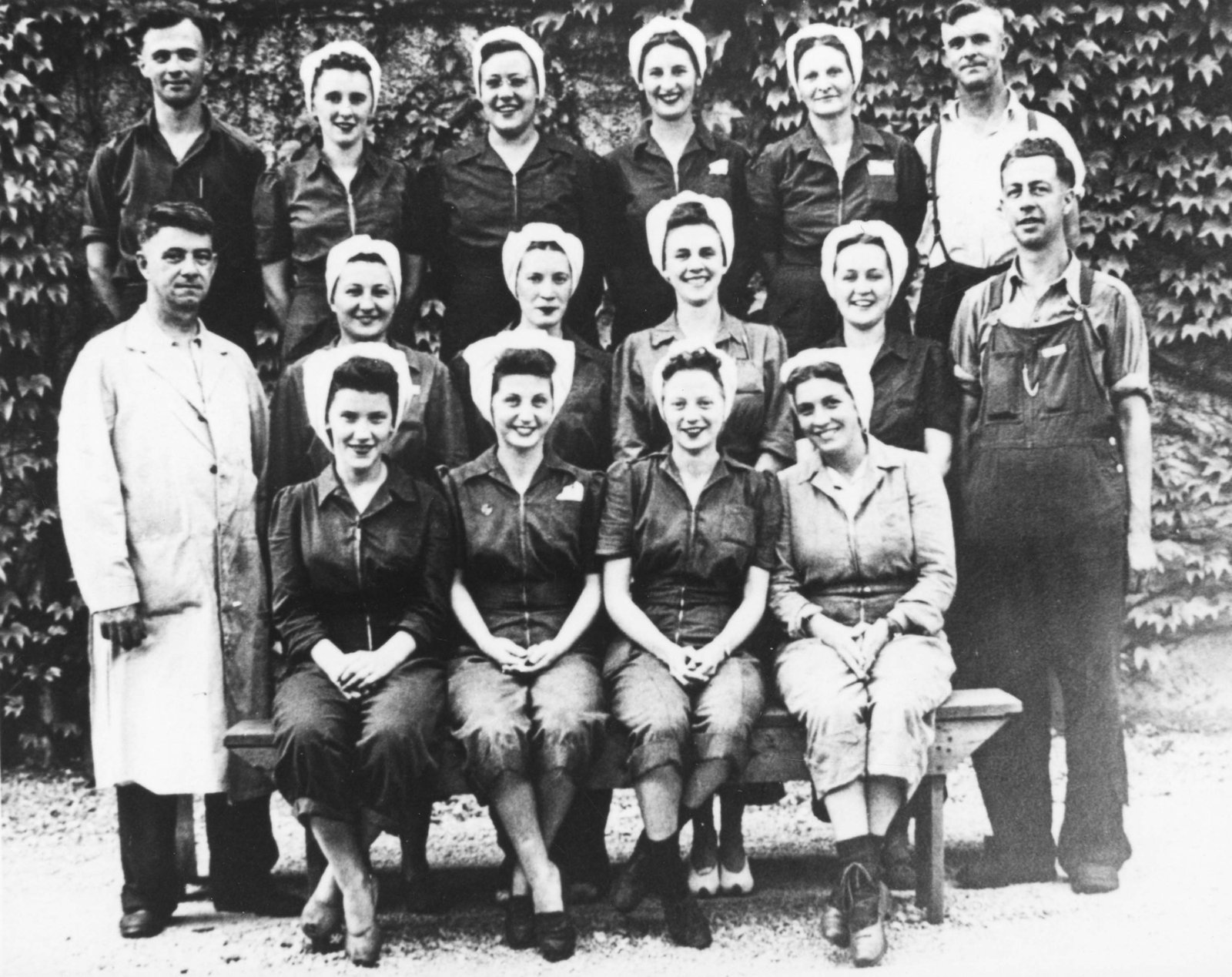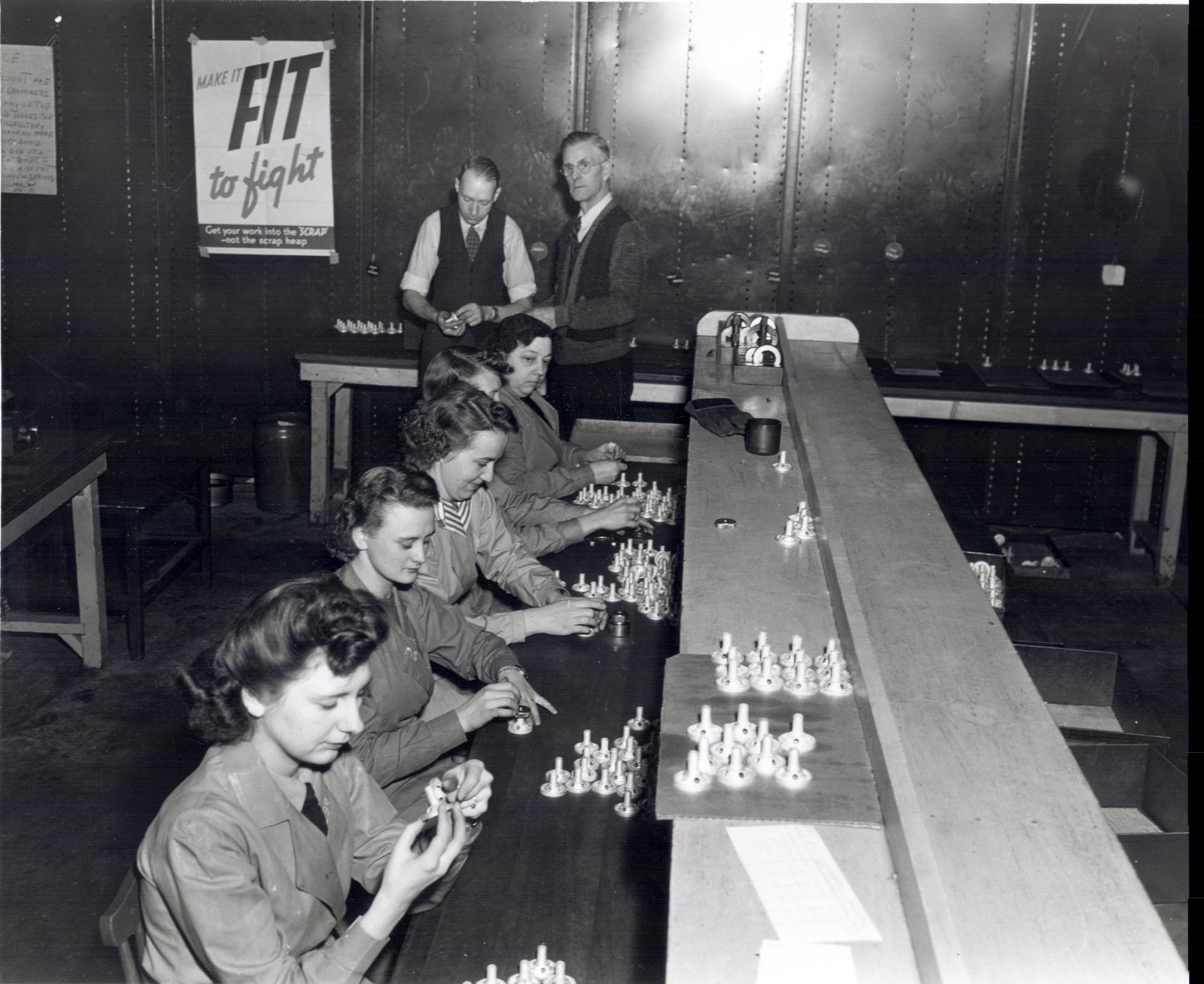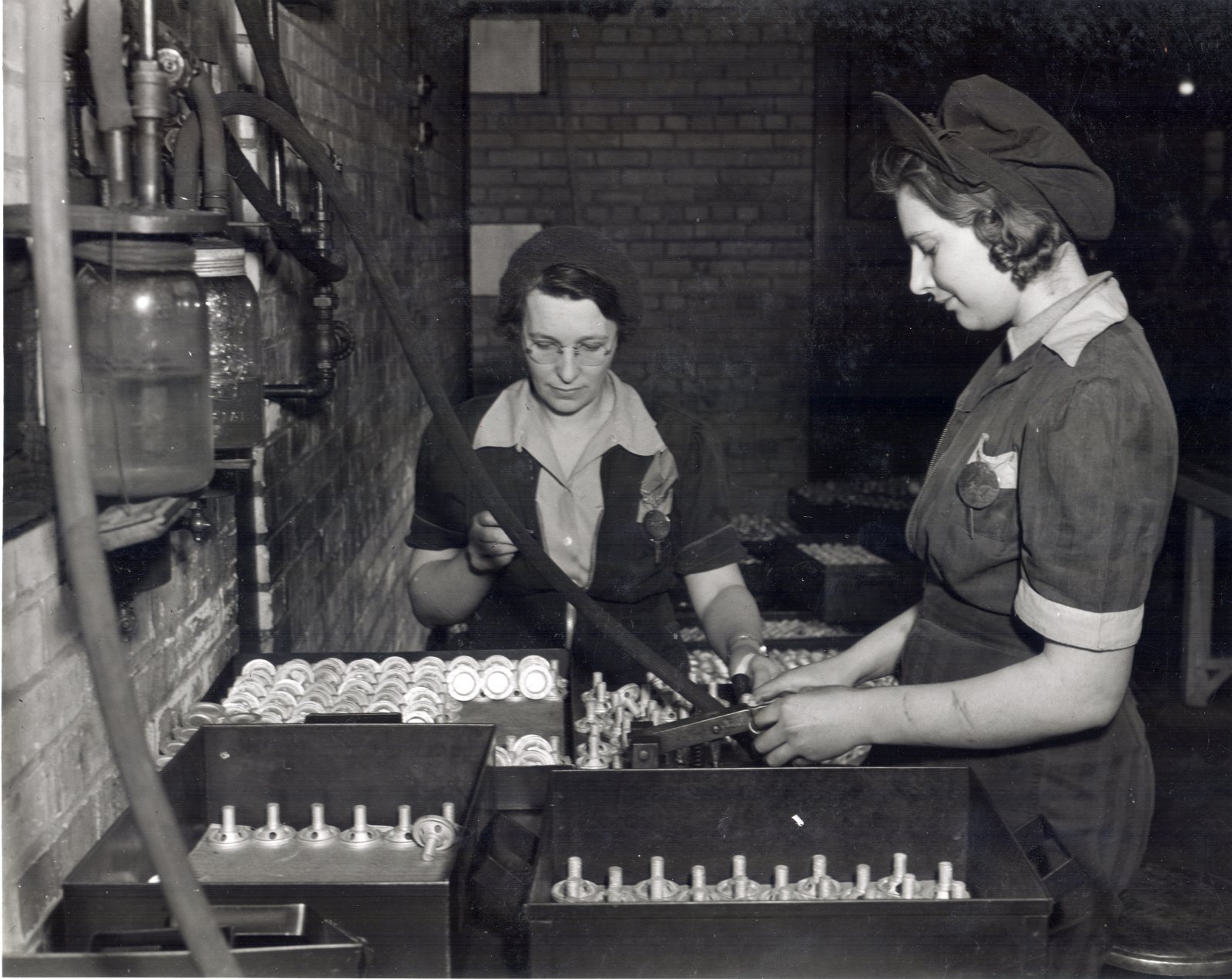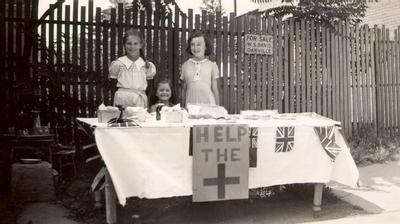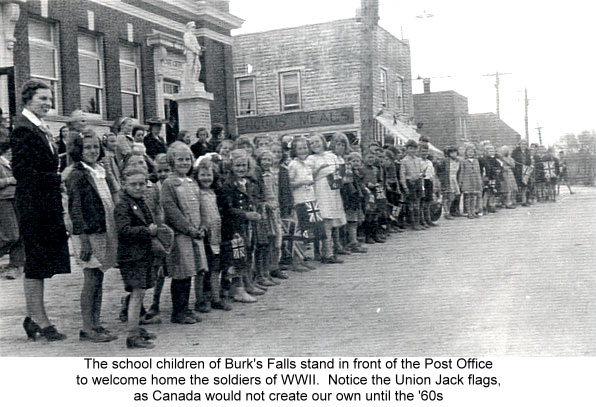Even though many more women were able to serve in the Second World War than the First, the vast majority of women's experiences were from the homefront, where they were holding down manufacturing jobs, serving in government and business, raising funds, and keeping their communities together.
Citizens at home were mobilized by the idea of "total war," that every part of life should be in service to the effort to fight fascism.
Women such as Eliza Padginton served dutifully at home, taking special interest in local soldiers sent overseas by sending them care packages, newspaper clippings, and postcards.
Others, such as the staff of the Pedlar People factory in Oshawa, and the Sunshine Company in Waterloo, employed women in munitions and supply manufacturing - in some areas becoming the biggest local employer during the war.
For some factories, such as Defence Industries Limited outside of Ajax, staffing required bringing women in from far away and putting them up in dormitories in what they called "the Village." DIL was the largest munitions factory in the Commonwealth during World War II, and its complex helped create growth in the nearby town of Ajax into the city it is today. Louise Johnson, interviewed in this video about DIL, was brought in by train from Saskatchewan to work and live on the factory campus.
Take a few minutes to watch some of this documentary about the DIL plant and the "Bomb Girls" who worked there, inspiration for the TV series of that name:
DIL's recreational activities included sports leagues, dances, live bands, and lots of interest groups. Former employee Donna Anderchuck talks about them here in this short clip.
DIL had such a large campus that it was able to run its own newsletter for employees, promoting local events as well as international news. Readers would find inspirational stories side-by-side with veiled threats about putting anything other than one's most supportive foot forward. Here, a munitions worker is jailed for voicing criticism of the government while on the job:
Women were constantly reminded of ways to help the war effort - from running their households to volunteering in their communities, propaganda and war measures targeted everyday life. Rationing governed meals and shopping, exhortations to buy "Victory Bonds" were everywhere, and Red Cross and other philanthropic groups exploded in numbers.
Take a look at the meat rationing instructions in this 1945 issue of Consumer News.
The Women's Institutes of Ontario performed similar philanthropic efforts during WWII as they had during WWI: they raised money, threw social events, educated each other, crafted garments and blankets for both soldiers and refugees overseas, and kept their communities together during trying times.
The regularly issued Home & Country magazine kept FWIO members across the province updated on each others' brilliant projects - such as in 1941, when seeds, mobile kitchens, and funds were sent overseas from area chapters.
Some women, like A. G. Hobbs of Lindsay, were lauded in print simply for being the mother of many enlisted children, and the wife of an enlisted husband. When one of her sons went missing in action, her grief was publicized and her story was told as one of fortitude, strength, and sacrifice.
Even with so much exhortation from the government and print media to support Canadian troops and keep active in service of the war, many women suffered from anxiety, depression, and loneliness.
In this column from the Georgetown Herald in 1941, Barbara Baines describes the helplessness felt by many women at home:
We need strong workers for our war industries and will need more in the future; we need strong workers on our farms; strong women for voluntary war services; and strong, healthy homemakers.
Women everywhere are willing, and indeed anxious, to do whatever they can for victory, but as individuals they are greatly handicapped. It is to be hoped though, that in the near future some Dominion-wide organization, with Government backing, will give the intelligent leadership that is so badly needed, in training and directing women to meet the present emergency.
